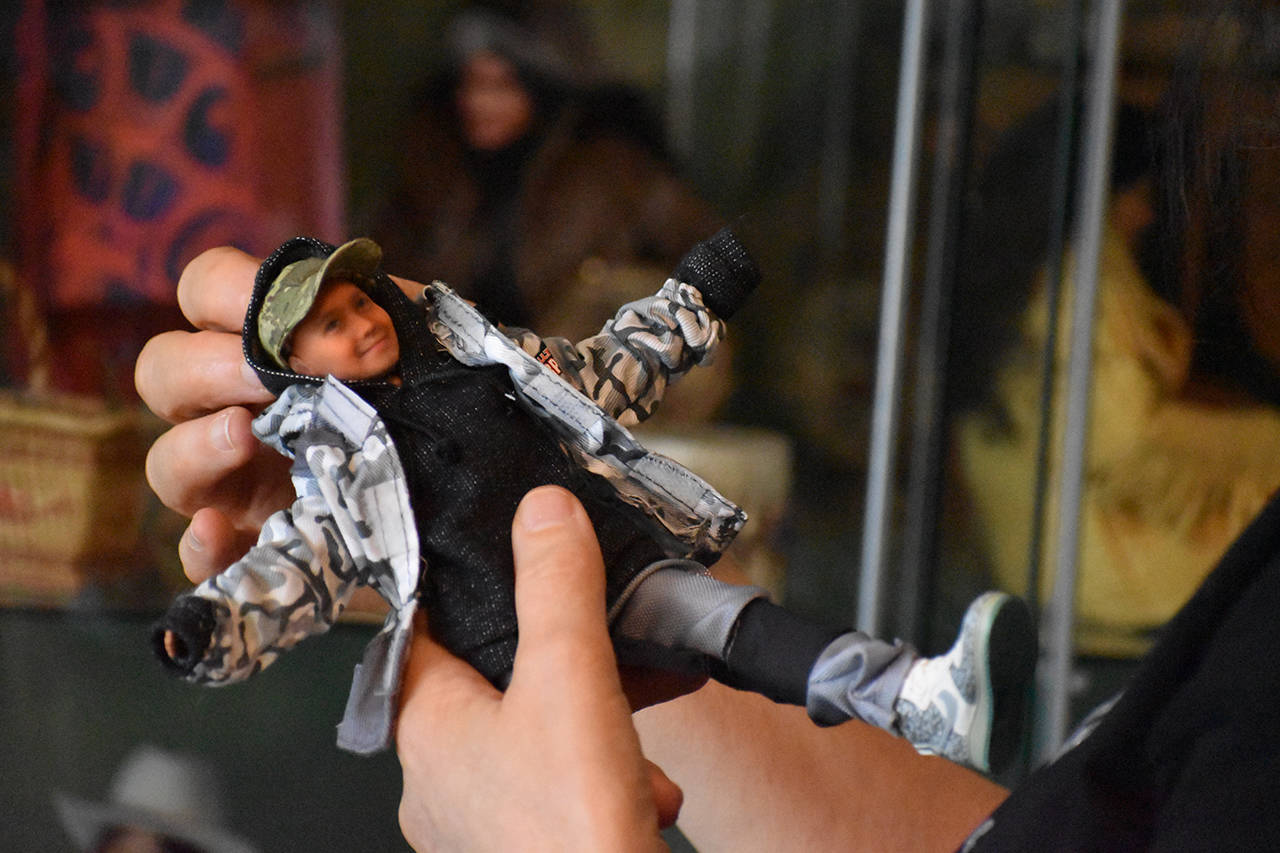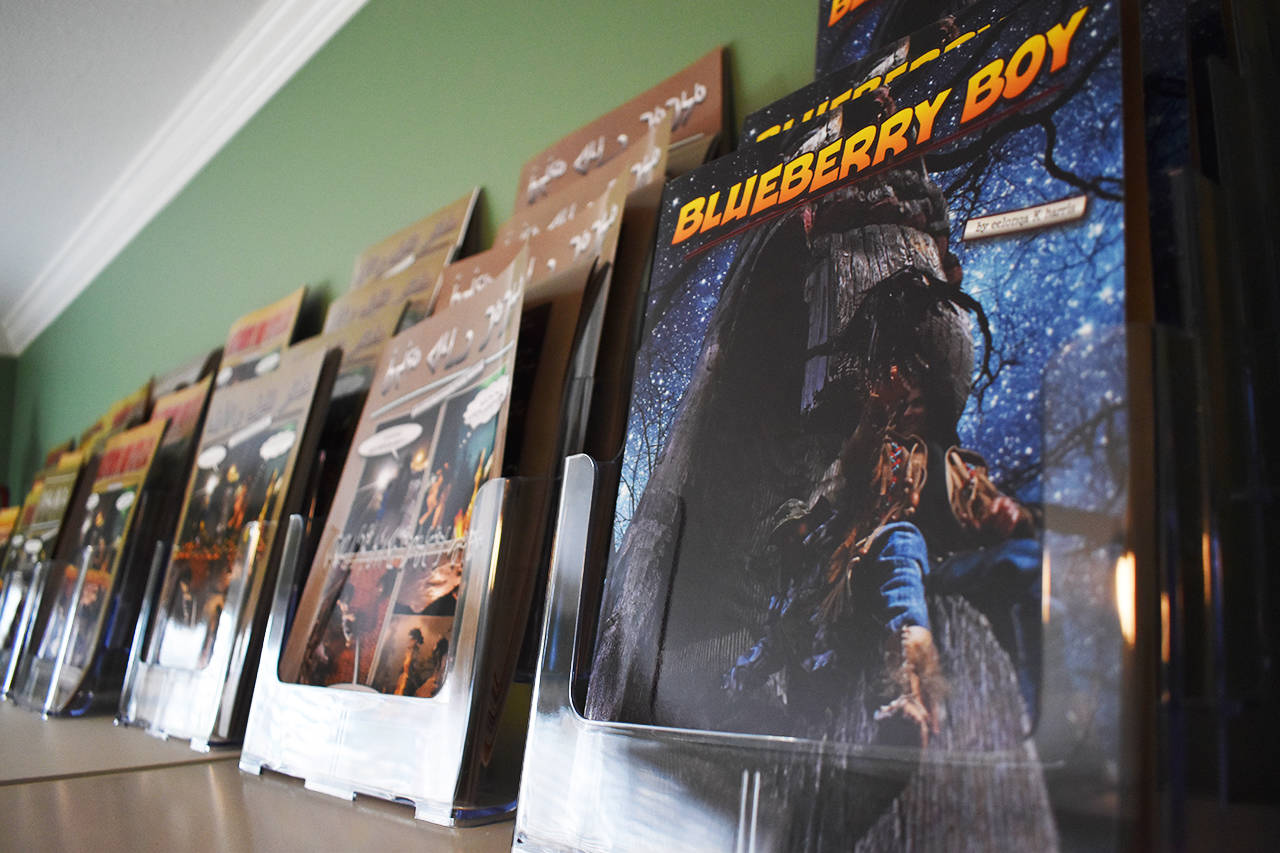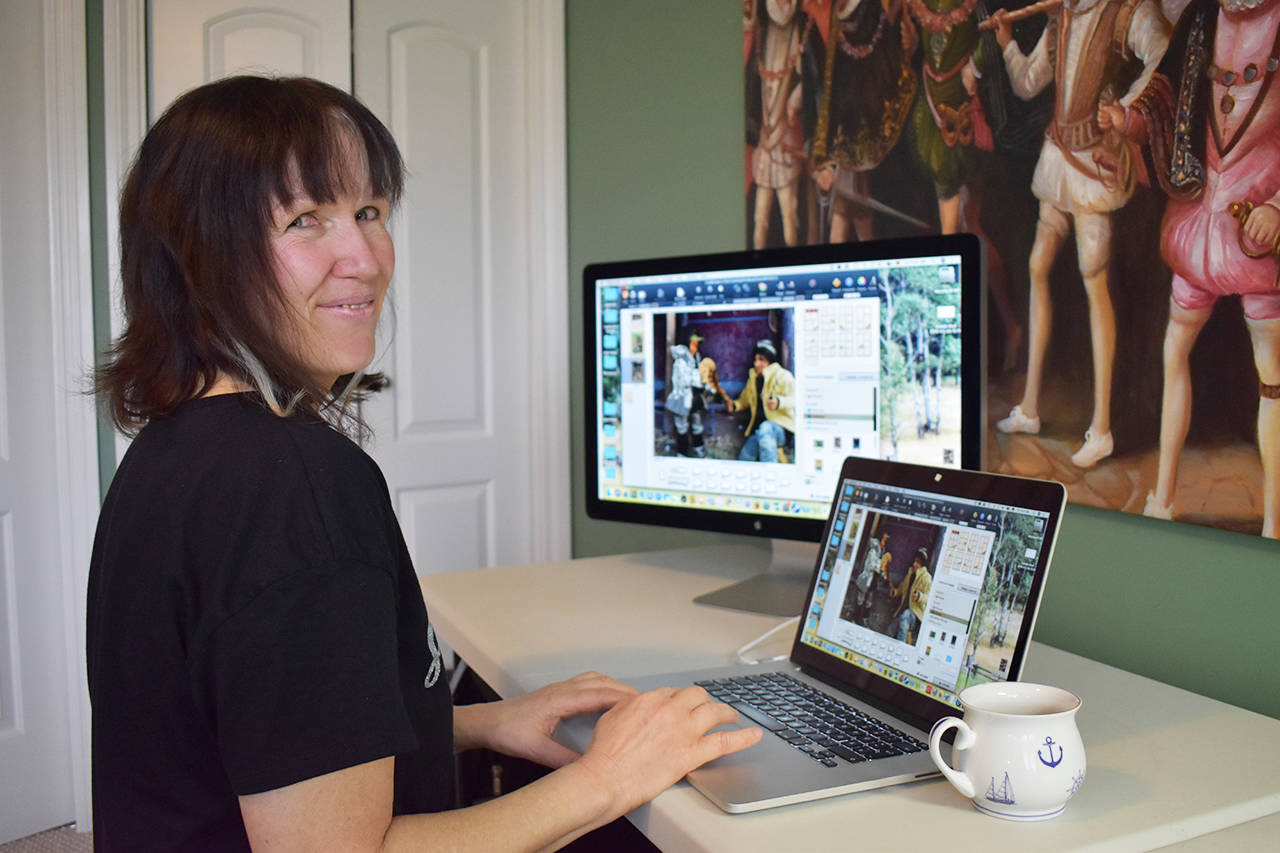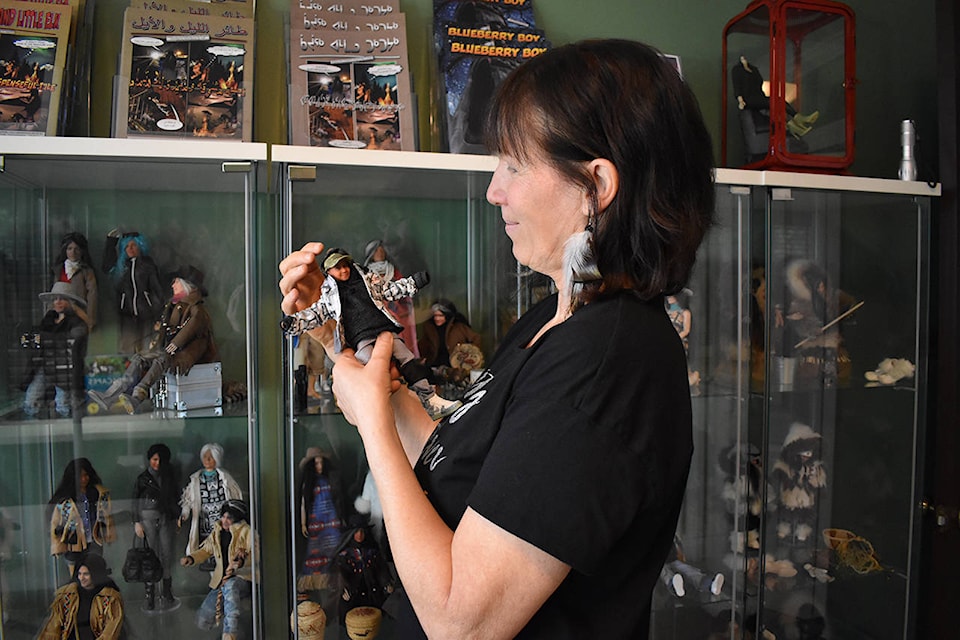In Ilonka Kuhl-Harris’ house in Harrison Hot Springs, she is surrounded by family.
Dotted throughout her home are handmade decorations from members of her and her husband’s extended family: a marionette hanging in an alcove on the wall, a cedar box on the floor by the window, a staff carved with Indigenous designs leaning by the stairs.
Each piece comes with a story about the relative who made it — but it’s only when you enter Kuhl-Harris’ office that you understand how much family means to her.
Along the wall of her office are glass cases filled with dozens of Barbie-sized dolls, each with the face of a member of her family. There’s her daughter, dressed in the warm fur clothing of Inuit peoples. There’s her father’s mother, younger than she is today. And in the far corner there’s a woman Kuhl-Harris calls Auntie Shirley, wearing a Victorian-style pleated dress.
“She’s native, by the way, but doesn’t she look like Queen Elizabeth II?” Kuhl-Harris asked, opening the glass door to get a closer look at Auntie Shirley’s likeness. “I couldn’t believe it.”
Each doll, its head 3D printed from pictures of the family, has hair gleaned from alpacas in Devon, clothes handmade by local artisans and bodies with joints that allow them to move. They are works of art in themselves, but that’s not why Kuhl-Harris has them.
“It started real small, you know, with a story, then it just snowballed from there,” she explained, laughing.
That start was more than five years ago, long after Kuhl-Harris had been an English teacher at Seabird Island Community School. Her husband is a Seabird Island band member, and Kuhl-Harris speaks Halq’eméylem as a second language.
RELATED: Breathing life into Halq’eméylem
“They’re always trying to teach the kids … Halq’eméylem, and the kids don’t want none of it,” Kuhl-Harris said about the school. “I looked at the materials and I was like, I’m not surprised.”
The available stories in Halq’eméylem were not what Kuhl-Harris expected teenagers to be interested in. So she decided to write some herself.
“They all loved to read comics, right,” she said. “That’s how Nighthawk happened.”
Nighthawk and Little Elk was Kuhl-Harris’ first book, published under the pen name eelonqa K harris with Seabird Island’s TaleFeather Publishing. The story follows the lives of Nighthawk and Little Elk, who were being raised by the evil foster mother Thoxweya.
“It reads like a fairy tale, but really it’s a book about the 60’s Scoop,” Kuhl-Harris explained.
Integrating First Nations stories about Thoxweya, the wild woman of the woods who steals and eats children, with stories of Indigenous children who were taken away from their families in the 1960s, she hoped to create material that would resonate with students at Seabird Island’s school.
There was only one problem.
“I wanted to make these materials a little more interesting for Seabird, but I can’t draw for the life of me,” she said.
Kuhl-Harris had her heart set on creating graphic novels, so there was only one thing for it: build realistic dolls and use photoshop to create nearly realistic illustrations.
For the next five years, she worked to develop her story and her characters, and in 2017 published Nighthawk and Little Elk in Halq’eméylem for the first time.
Her publishing continued from there; Nighthawk and Little Elk was eventually published in English, German, syllabic Cree, Romanized Cree, Arabic and Inuktituk. Soon she was working on a story about the exploitation of the north, Katiktaak and Kaviskaak. But that book was put on hold by a request from a cousin.
“When a relative asks you to do something, you do it,” she said. “You don’t saw, well maybe later — that’s how it goes.”
SEE ALSO: Harrison woman buys land to stop development
The request was simple. Cousin Lisa Mason wanted Kuhl-Harris to write a book for her son Dillon, who was being teased and bullied at school.
According to Kuhl-Harris, Dillon has Apraxia, a type of motor condition that makes it difficult for kids to speak. In Dillon’s case, Kuhl-Harris said, it can seem like he’s having “a little person’s stroke.”
“You know older people, how when they have a stroke, they look at you and they say something and they are sure they are saying the right thing, (but) what comes out … doesn’t make any sense,” Kuhl-Harris said. “That’s sort of what (it’s like) with him.”
In Kuhl-Harris’ glass bookshelf is the doll of Dillon that she made for his book, Blueberry Boy. (The title comes from Dillon’s own nickname, a result of eating lots and lots of blueberries.) In doll-form, he is happy and smiling, wearing a cameo jacket that seems one size too big. In the book, he struggles with difficulties coming from his peers and a “powerful leader, who was greedy, rude and inconsiderate.”
“Clearly we all know who that is,” she said, smiling. If it wasn’t clear enough, a doll figure of Donald Trump sits in her glass cabinet, ready for his next debut in Katiktaak and Kaviskaak.
RELATED: President Trump dismisses tell-all book as ‘made up stories’
“Then one day he gets so mad,” Kuhl-Harris said. She had opened a copy of the book on her tablet, and had flipped to Dillon’s “hero scene,” as she called it.
“He never says anything. He’s very shy. But at that time, he says — this really happened by the way,” she added as she looked over the page. “‘We all green.’
“This was when all the adults were bickering and fighting at his school. That’s when he said that.”
“What he means of course … was we’re all the same,” she continued. “He said that sentence and everybody knew what he meant.”
Dillon ends the book a hero, and seems to enjoy that in real life too: Kuhl-Harris said Dillon was saying he should be doing book signings for Blueberry Boy.
Right now, Blueberry Boy is available in English, German and Cree, although Kuhl-Harris hopes to get it translated into as many languages as Nighthawk and Little Elk. Her northern book is still in the works, but has been put on hold again for a book about cancer, after her best friend was diagnosed with stage four bone marrow cancer.
“The initial goal was to create some teaching materials,” Kuhl-Harris said about her work, which is used in Seabird Island Community school and in her new classroom at Byrne Creek Community School in Burnaby.
“And in a way that’s still what I’m doing. I’m just integrating more things now.”
Correction: An earlier version of this article misspelled the name of Kuhl-Harris’ northern novel. It is actually spelled Katiktaak and Kaviskaak. An earlier version also misidentified Kuhl-Harris’ cousin as Linda Mason, when she is actually Lisa Mason. These changes have been made and we deeply regret the error.
grace.kennedy@ahobserver.com
Like us on Facebook and follow us on Twitter



